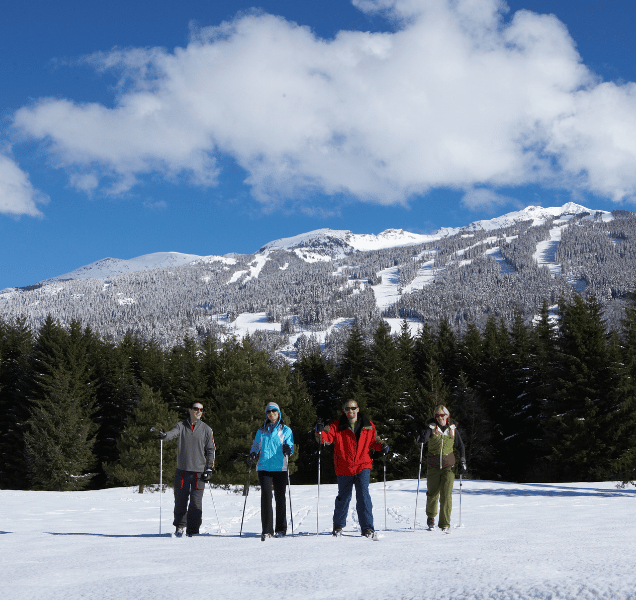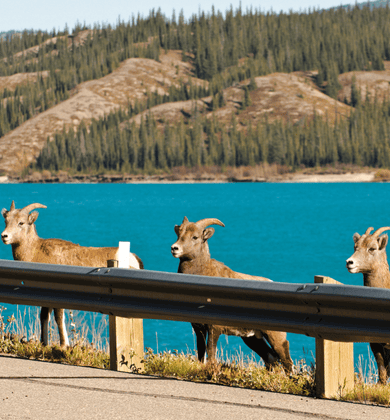
Watch Wildlife from a Safe Distance
Key Highlights
- Discover why maintaining a safe distance while observing wild animals in Canada is essential for the safety of both humans and wildlife.
- Explore Canada’s renowned national parks and wildlife areas to spot species like black bears and sea lions in their natural habitats.
- Learn to identify signs of animal stress or aggression and adopt safe viewing practices.
- Master ethical wildlife photography techniques with advanced zoom lens technology.
Wildlife Species Commonly Encountered in Canada
Canada is home to many kinds of wildlife. Black bears (Ursus americanus) are one of the most well-known animals in the country. They usually live alone and move across a variety of habitats. You can find them in both mountain regions and thick forests.
There are other animals you can often see too, like moose, bison, elk, beaver, wolf, sea lions and many types of birds that move from place to place with the seasons.
Watching Canadian wildlife gives people the chance to see special animal behaviors. It also shows us why it's important to live in a way that is fair to animals and the places they call home.
Understanding the Importance of Watching Wildlife from a Safe Distance
Every type of animal has its own story, behaviors, and place in nature. Giving space helps keep their actions normal, even for animals that do not seem at risk. Being careful while watching wildlife makes it easier to notice what makes each one special.
If people get too close, there can be problems. These animals may see people as a danger or as something that gives food. This can lead them to change what they normally do. It could even cause unsafe situations. Watching without getting involved helps these animals live as they should in their homes.
Giving them space also helps protect nature. It puts less pressure on where these animals live. This also helps people better understand what it takes to protect many kinds of living things.
Looking at animals without stopping what they do helps more people want to keep the wild safe.
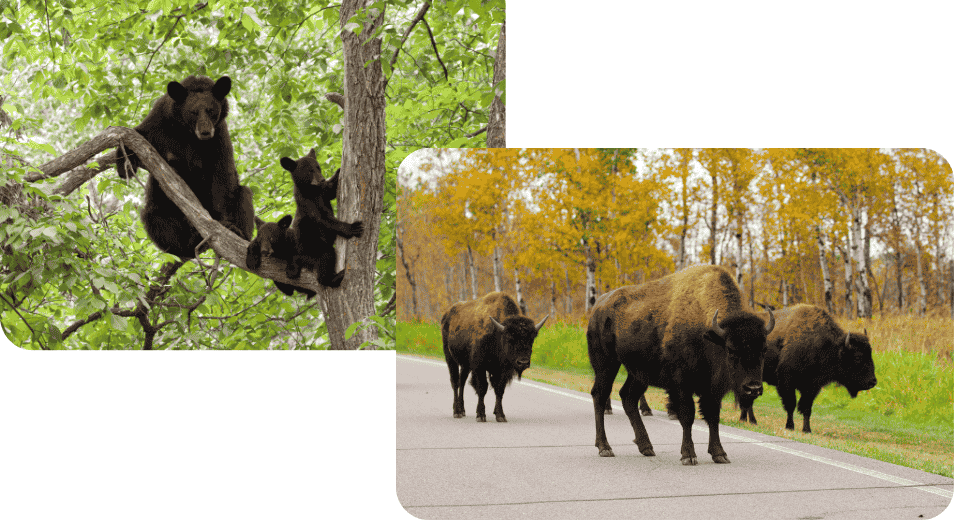
Human Safety Considerations
Staying safe when you watch wildlife matters just as much as keeping the animals safe. Some large animals, like black bears, are much heavier than people. If you get too close, things can turn risky fast. These animals move quickly and act on instinct, and you don't want to challenge that.
Big animals have more body weight and power. Even if they do not mean to, they could hurt someone if they feel scared or need to protect themselves. With weight gain in healthy habitats, these animals can be even stronger. No matter what, wildlife has the strength to easily overpower humans. Giving them a safe distance is important.
By keeping a respectful distance, you protect yourself and still get a great viewing experience.
Popular Canadian Wildlife Viewing Opportunities
Canada has many different landscapes and is home to a lot of wildlife. Its famous national parks, administered by Parks Canada, are great places to see animals. From the western provinces, to Nova Scotia and Newfoundland, these places welcome people who love nature. You will get to see animals in places where they live naturally.
You are encouraged to spend time in these special places but come prepared. You might hike on marked trails where you need to be bear aware or you could choose to join a guided tour. Canada gives you a chance to see animals in the wild. It also makes sure that the land and animals are cared for.
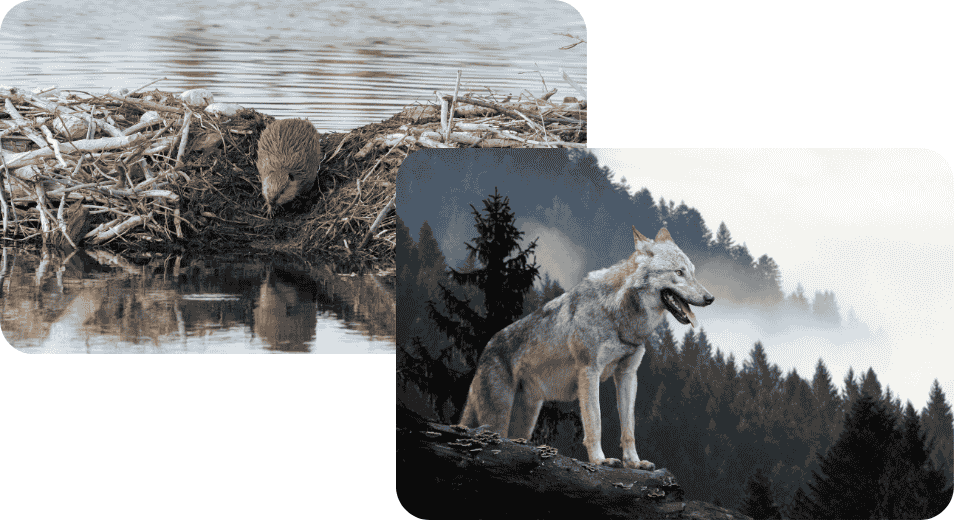
National Parks and Protected Areas
Canada’s national parks are some of the best places to see wildlife. Banff National Park, in western Canada, gives you many amazing ways to see different species. The province of British Columbia also has a lot of places along coastlines and mountains where you can see marine life, moose and bears.
Here’s a simple table showing national parks great for seeing animals:
|
National Park or Area |
|
|
|
|
Banff National Park |
Alberta, bison, elk, moose, bears, rocky mountain sheep and more |
||
| Pacific Rim National Park | BC, sea lions and black bears | ||
| Jasper National Park | Alberta, different species including grizzly bears |
These protected areas let people have good and lasting memories while also looking after the land and animals there. Before you go, get advice and maps from the Parks Canada website to help plan your trip.
Birds to Watch For
You can see many types of birds while you watch wildlife, especially if you are in different places all over North America. You may spot birds like the American bald eagle, Canadian Goose, loon, puffins or the colourful Canada Warbler. Large numbers of birds travel great distances from their winter habitats to Canada. Using binoculars will help a lot. You get a better look and stay at a safe distance. By watching this way, you won't get too close and bother them.
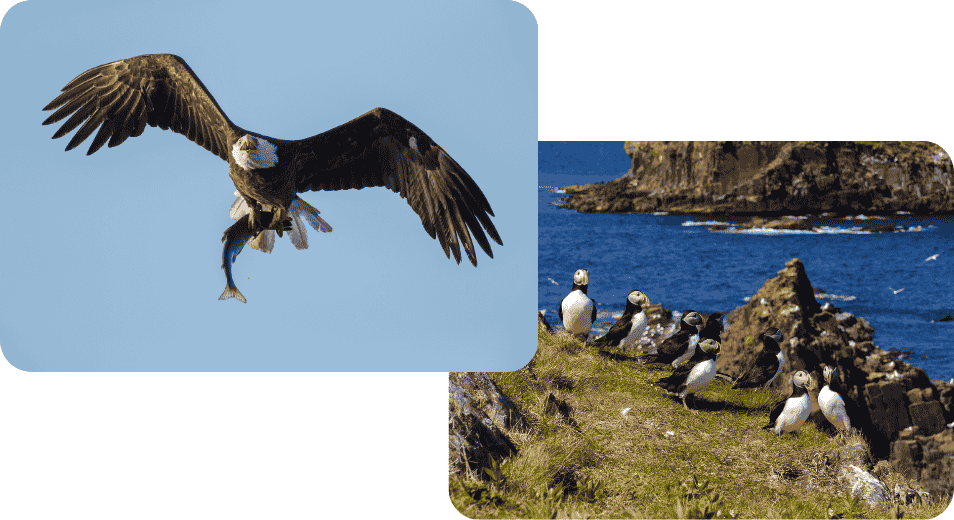
Recognizing Animal Behaviors and Warning Signs
To watch wildlife safely, it is important to understand animal behaviors. Every species of animal will show its own warning signs if it feels stress, fear, or anger. Watch for quick movements, raised hair, or a strong stare. These can mean the animal is not comfortable or may feel threatened.
You may hear different sounds, which can warn others or show the animal is upset. An animal’s body, such as a lowered head or bared teeth, can show it is ready to defend itself. When you see and understand these signs, you help keep yourself safe. For example, black bears can swat the ground or make huffing sounds when they feel a threat. If you see these signs, ensure you are observing from a safe place.
When observing deer, you should look for things like tail flicks, or for pacing in solitary animals. These warnings tell you when you are too close so retreat and help make this shared space good for all.
Staying on Marked Trails and Lookouts
Exploring nature lets you have great moments seeing wildlife, but it is important to stay safe. To reduce the possibility of a wildlife encounter, you should use marked trails and lookouts made for people. These paths help protect the land and the animals that live there.
When you stay on the set paths, you reduce the possibility of startling wild animals, meaning there is less chance of aggressive actions.
Best Practices for Responsible Wildlife Watching
Using binoculars or a camera with a zoom lens helps keep you safe when you watch wildlife You can see many different species and take great photos while staying at a safe distance. Good binoculars let you look at animals like black bears or sea lions, even when it is mating season or when they feed. This way, you do not reach into their space or bother them.
If you use zoom lenses on your camera, you can get sharp pictures of these animals in North America without making them feel scared or upset Be patient and quiet. If you wait and watch, you may get some amazing photos that capture the real way wild animals live. The goal is to show wildlife as they are, without making trouble for them or hurting their lives.
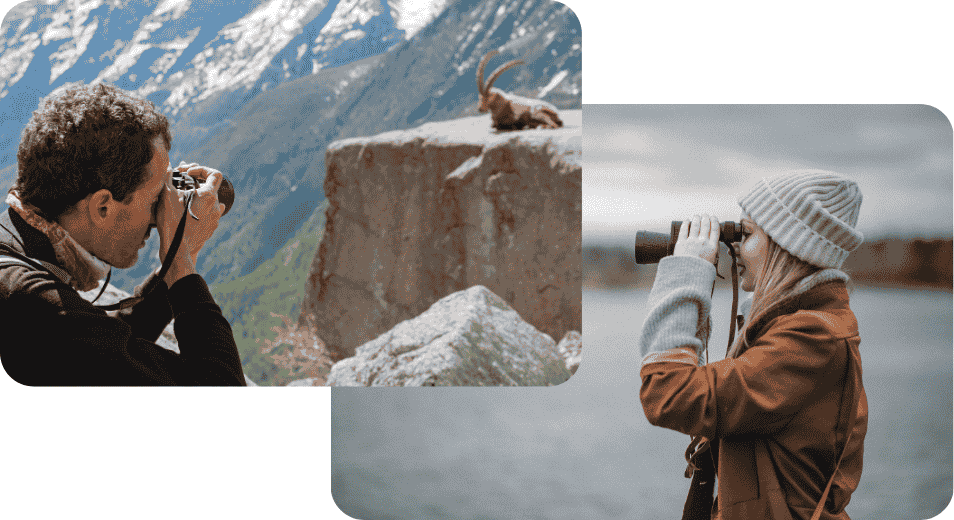
Educating Children About Wildlife Safety
Understanding wildlife safety is very important for children who like to explore outdoors. Talk to them about wild animals, and always tell them to stay a good distance away for safety. When you do this, the kids learn to see and enjoy wildlife without bothering or scaring the animals.
You can talk with children about the types of local animals, like black bears, mountain lions or moose. Show them how these animals act and where they live. It can help to use words and stories that fit the child's age. Try games and story time, too, to make learning fun.
As the children get more curious, you give them important safety tips as well. This mix of curiosity and safety helps them love the natural world. It also helps teach them about conservation of nature, so they learn to respect wild animals and have good outdoor trips for many years.
It is helpful to keep your family or friends in small groups. Good talk in the group helps a lot. Everyone needs to know what to do and where to go. This makes sure everyone sticks together.
Respecting Other Visitors
Watching wild animals in Canada should be a peaceful and kind experience with others. It's good to keep noise down so that everyone can enjoy the quiet and that the animals will not get scared.
When you find a spot to watch, let others have a turn to see everything in nature. If you wait and are patient, you show respect for wild animals and for other people too. When we all stay quiet, we help each other enjoy the moment. This way, we can see the natural history here and share our love for the many wild animals that live in North America.
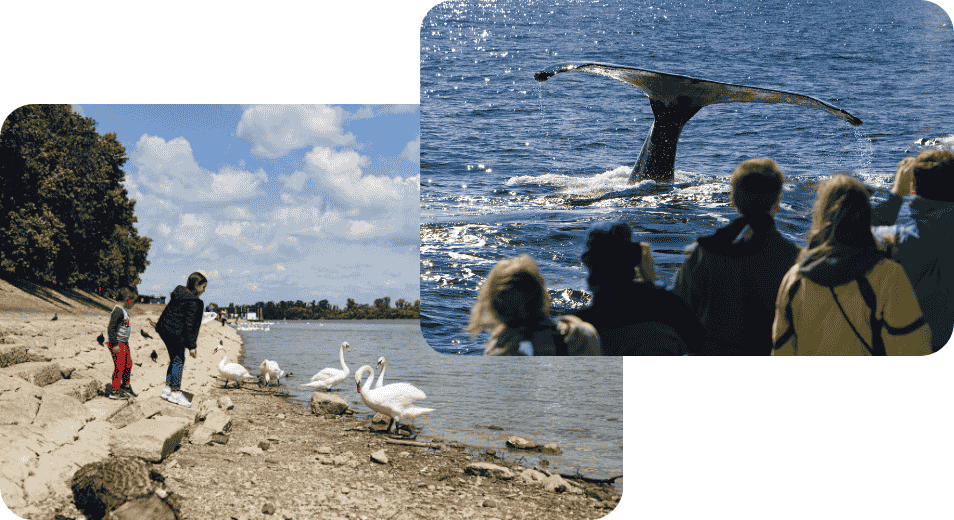
Essential Equipment Checklist
A good checklist helps make your wildlife watching trip more fun and easy. You should have binoculars that have at least 8x magnification. These are great for seeing distant animals.
If you like to take photos, bring a zoom lens. It will let you get clear pictures of different species without getting too close and bothering them.
You also need strong shoes and the right clothes for the weather. This will help you move around safely in all types of places.
Take a field guide to help you know which animals you see and a notebook to write down what you find.
Bring bear spray, and a first aid kit, so you can deal with any small injuries while you are out there. Be ready, and you will have a great time in nature.
Wildlife Safety Regulations in Canada
Understanding wildlife safety rules in Canada helps you enjoy the outdoors and protects you and the animals. There are laws about the way people can interact with wild animals, especially inside a national park.
You must keep a safe distance from wild animals such as black bears. If you get too close, there can be hefty fines.
Being around wild animals in a national park can be a great experience when you follow the directions from the national park service to protect both their lives and yours.
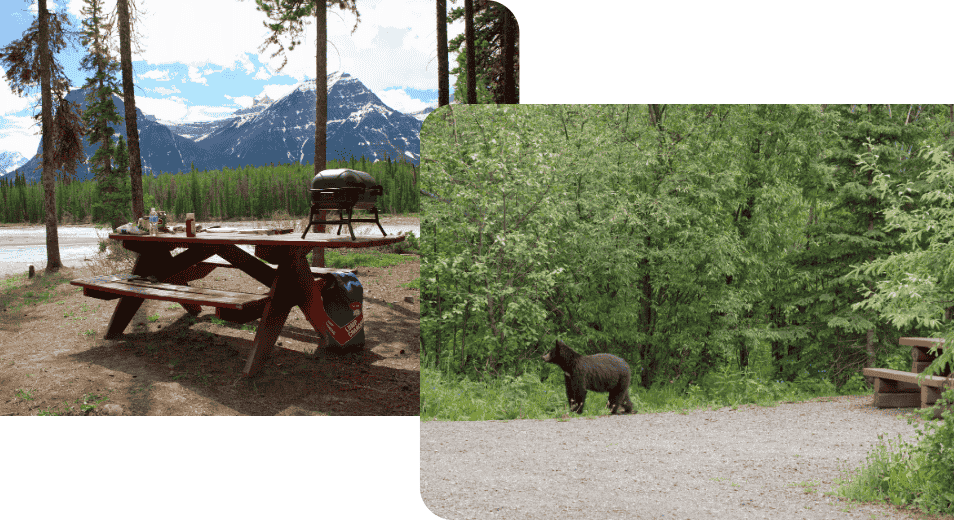
Don't Create Traffic Jams and Stay in Your Car
We all know how exciting it is to suddenly spot wildlife when driving. Unless the animal is blocking the road, be considerate and don't stop to take a photo. This creates an accordian effect where everyone then stops and the road becomes impassable.
If you do find a safe place off the road to pull over, stay in your car and take your photos there. We've all heard stories of 'bear jams' and these only contribute to making an animal stressed and uncomfortable.
Wildlife Safety in Campgrounds
CanaDream cares about your safety. When camping in areas frequented by wildlife, keep your campsite clean to avoid bear encounters and curiosity from other wild animals.
Extinguish your campfire and ensure all food is stored either in your RV or in the bear proof lockers many campsites provide. Dispose of garbage in bear-proof bins. Bears, in particular, have a strong sense of smell and will wander into campsites if they sense there is food available.
Never feed the wildlife. Doing so will habituate the bear, making it search for easy food options rather than seek it in the wild. Campers need to be mindful that a fed bear is often a dead bear. Play your part and protect both you and the bear from close campground encounters.
When and Where to Watch Wildlife Safely
The best time to see wildlife is often in the early morning or late afternoon. Animals are usually more active during these parts of the day. The time of year also matters. Spring and early summer are good to see many kinds of animals. This is when they go out to find food and take care of their young.
It is also smart to pay attention to the weather. Try not to go when there is heavy rain or a storm. This helps you stay safe and makes your time watching wildlife more enjoyable.
In spring and early summer, you can see a lot of special behaviors from animals. Some do courtship dances. Others take care of their babies. It is really interesting to watch these things happen.
You also get to see seasonal migrations in late winter and in autumn. Many wild animals gather, such as sea lions and tundra swans. They come together in big groups during this time.
If you want to have the best time, plan your trips around these moments. You will see much more in different habitats.
Conclusion
When you go out to watch wild animals, it is essential you do your part to keep wildlife wild. It is very important to keep a safe distance from them. This helps you stay safe and lets the animals act in a natural way.
If you know about their behavior and spot any signs of danger, you get to enjoy and understand nature even more. If you make sure to use good and careful ways of watching, you, your family, and others can have a great time seeing wildlife without harming these special places.
You should always remember that taking care of our natural world and adopting the principals of Leave No Trace is what lets future generations see and enjoy wild animals too.
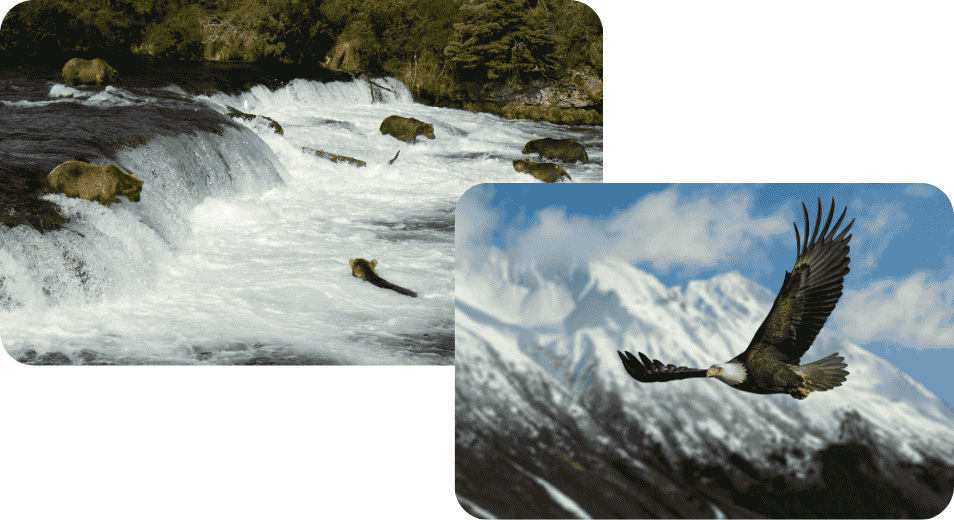
Frequently Asked Questions
What is a safe distance to watch wildlife in Canada?
The safe distance for watching wildlife in Canada is important. When you see large mammals, like bears or moose, you should stay at least 100 meters (328 feet) away. For smaller animals, such as birds, the safe distance is around 30 meters (98 feet). Always keep your safety in mind and give animals their space.
What should I do if I encounter a dangerous animal?
If you meet a dangerous animal, try to stay calm. Do not look straight into its eyes. Step back slowly but do not turn your back to it. Make some noise so the animal knows you are there. If the animal comes near, use anything you can find to look bigger. Look for a safe place to hide if you need to.
Are there guided wildlife tours for safe viewing?
Yes, there are many parks and wildlife reserves that have guided tours. These tours are led by naturalists who know a lot about the area. They help people see wildlife in a safe way. You can learn about how animals act and where they live. On these tours, people also learn how to watch the animals the right way. This helps visitors enjoy nature more, and the animals are not bothered.
How can I teach kids about wildlife safety?
Encourage kids to look at wildlife from far away. Tell them why they should not get close to animals. Use fun things to help teach, like storytelling or games, to show safe ways to act. Teach them to respect where animals live. Help them learn the signs that show when an animal is stressed or mad, so they can understand what to do better.
Can I feed wild animals during my visit?
Feeding wild animals is not good. It gets in the way of how they look for food on their own. They start to depend on people for food. This can be bad for their health and for the health of people, too. In the end, it can hurt wild animals in that area. The best thing to do is watch wild animals from far away and not give them any food.

